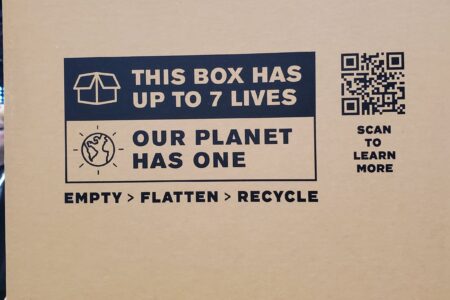World Tea Expo’s strength is its educational component

Moose at World Tea Expo. Image: Vanessa Facenda
Every conference, convention and exhibition have a ‘sweet spot’, and for World Tea Expo, it is the education component. World Tea Expo 2024 just concluded (18-20 March), and this year’s edition – held in Las Vegas again – had one of the strongest workshop and education segments to date. The sessions/lectures were more comprehensive and there was a broader selection of speakers.
The workshops and education sessions began with the all-day Tea Business Incubator on 18 March (a Tea Primer for true beginners was held on the 17th), which is for anyone interested in starting a tea business or who wants more insights into the tea industry. Jeff Fuchs, founder, Puerh Procurer, opened the conference and trade show component on the 19th with a keynote speech that discussed the history of tea, its evolution through time and cultures, and current challenges facing the tea industry. Concurrent sessions included Promotion of Tea: A Global Perspective, Clone Wars: Ten Tea Cultivars You Should Know, Driving Data Purity Through Traceability, Assamica Producers’ Collaboration, How to Navigate and Profit with Tea in E-Commerce, Essential Insights for Success in the Ready to Drink Market, Adapting to Adaptogens, and Flavoring 101: Exploring its Place in the Tea Industry. Panel discussions included Conscious Commerce: Empowering Customers Through Responsible Sourcing, Identifying Issues in Sustainability & Traceability in Tea, and Implementing Sustainability & Traceability in Tea.
Participation in the various lectures was high. I attended two of the panel discussions on sustainability, and both had large audiences who were actively engaged, taking notes, and asking questions — with the majority being first-time attendees. When asked what sustainability in tea means by one new participant, Shabnam Webber, president of the Tea and Herbal Association of Canada, noting that the tea industry is 5,000 years old, summed it up nicely saying, “We are all stewards passing through the tea industry and stewardship requires you to care about tea in order to pass it on to the next generation.”
Most education session participants with whom I spoke, found this year’s roster to be some of the strongest WTE has offered to date, noting there were diverse in content, valuable, and beneficial.
The exhibition component, which had a strong number of exhibitors and attendees, remains the weaker segment of WTE. There was a lot of turnover in terms of exhibitors from the 2023 show to this year’s show, with only a handful being repeats. There was a large pavilion of producers from China, as well as producers from Japan, India, Nepal, Vietnam and Sri Lanka (including the Sri Lanka Tea Board), among others. There were also multiple accessory exhibitors, that is, those looking to sell teapots, teaware, loose leaf tea strainers, travel mugs, etc. Brands (some of which also wholesale/private label) included SerendipiTea, Harney & Sons, Wild Orchard and Moosa, a new herbal/botanical brand, which is marketing dried fruits, herbs and spices from the Andes. The blends are placed in cups/mugs and then water is added, and rather than removing the items after steeping, the fruits, herbs and spices are designed to be eaten.
Some have said this will be their last year exhibiting – but will attend as a visitor next year – as there is no ROI given the expense of exhibiting. “The show is not generating enough potential new business for us and the leads we do have are not strong.” Multiple exhibitors echoed that sentiment. One new exhibitor, selling tea shop accessories, decided to exhibit because she was told there would be a lot of tea shop owners attending. By the second day, she shared that there had been little interest in her products but said they “were having fun.” Other exhibitors said they have typically attended WTE to connect with their customers in person, but most are no longer attending the expo.
World Tea Expo was again co-located with the Bar & Restaurant Show at the Las Vegas Convention Center. While the co-location offers increased foot traffic, energy and excitement, all exhibitors I spoke with said the joint show has not provided any benefit to them as there has been no interest from Bar & Restaurant Show attendees in tea for their businesses. In fact, the presence of the Bar & Restaurant Show negatively impacted WTE’s education segment this year as it ‘took over WTE’s space.’ That is, WTE participants interested in the lectures, after picking up their badges in the front of the South Hall, rather than going to the second floor, which has been the standard for many years, had to exit the building in the front where they had entered, go to the side of the South Hall to catch a golf cart to take them to the back of the building. The signage was not clear so the process was confusing, and honestly, convoluted. To walk the exhibition floor when it opened at 12pm, attendees could catch the golf cart back to the front or walk from the back of the hall.
Exhibitors and attendees (myself included) agree that where World Tea Expo really shines, its strength, are the workshops and education sessions/lectures. The tea industry needs WTE to not only survive, but to also grow and flourish, as it is, for the most part, the only B2B tea event in North America. Hopefully, as the show continues to evolve post-pandemic and under the ownership of Questex, a ‘happy medium’ can be found where both attendees and exhibitors can benefit.
- Vanessa L Facenda, editor, Tea & Coffee Trade Journal.
Keep in touch via email: [email protected] Twitter: @TCTradeJournal or LinkedIn: Tea & Coffee Trade Journal



